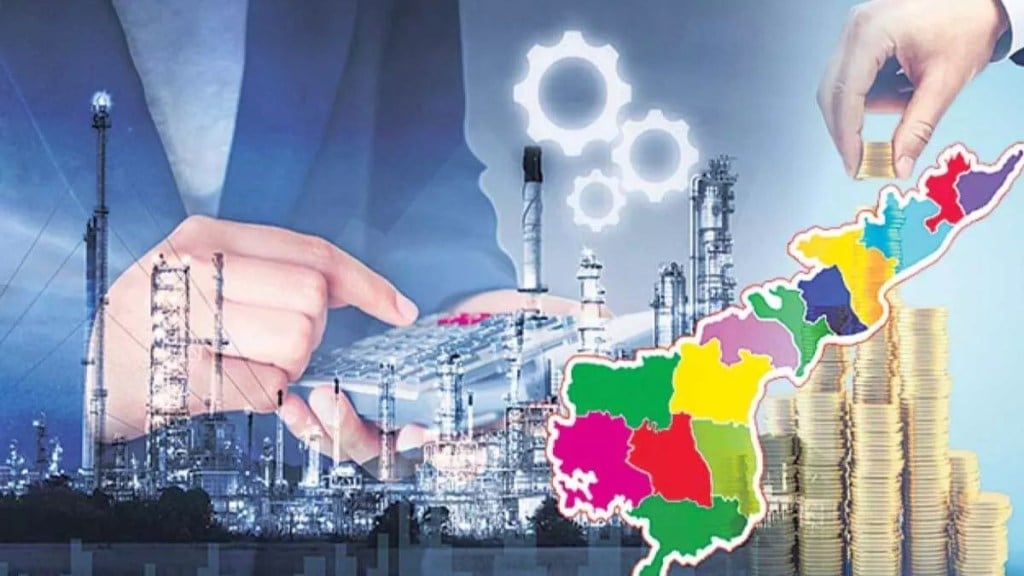By N Chandra Mohan
The big-ticket MoUs or investment intentions of $150 billion for Andhra Pradesh at the CII Partnership Summit in Visakhapatnam will definitely be transformative for its ambitions to become a developed state by 2047. There have also been other investment proposals since N Chandrababu Naidu returned to power in Andhra last year and became chief minister for his fourth term.
Even if a fraction of these investment proposals are implemented, this can easily propel Andhra to become a $2.4-trillion economy from current levels of $188 billion. Google’s investments of $15 billion anchor the state’s plans to accelerate the artificial intelligence industry locally.
ReNew Energy Global Plc seeks to bring a fully integrated clean energy value chain to the state with fresh investments of $9.3 billion. A quantum computing hub is also planned in the state’s capital, Amaravati, which aims to attract investments of $1 billion by January 2029.
Naidu ambitiously hopes to attract $500 billion over the next three years. These mind-boggling numbers appear a dramatic transformation for a state that is a relative backwater for industry after it was bifurcated from Telangana with Hyderabad becoming the latter’s capital in 2014.
Naidu has a reputation for being tech savvy and reforms-friendly. His ambitions to attract big-ticket investments reflect his desire to replicate his earlier success in making Hyderabad an IT hub to similarly transform the predominantly agrarian state of Andhra. Investors are no doubt bound to be drawn to the state as it is one of the best for doing business.
It is also one of the faster-growing states registering an average annual growth of 6.9% during the last decade, outpacing the national GDP growth of 6%. What has powered this robust trajectory is a dynamic agricultural sector in coastal Andhra that has prospered in the Krishna-Godavari delta region.
A forward-looking farming community has diversified into acquaculture and horticulture. A strong agrarian base; the second largest coastline of 974 km; a large English-speaking population; and a vast diaspora of scientists, engineers, and software professionals based in the US and other developed nations are huge advantages in an interconnected world.
The big question for Naidu
The big question is how rapidly Naidu can transform a predominantly agrarian state into an industrial one. The challenges are daunting as the share of gross state value added in manufacturing in the gross state domestic product, at 9.5%, is much lower than the national average.
Investments typically tend to flow to states which have had a head start in industrialisation. On foreign direct investments, Maharashtra, Karnataka, Gujarat, Delhi, and Tamil Nadu together accounted for over four-fifths of equity inflows of $28 billion this calendar year till June. Andhra secured only $162 million.
These five states also account for half of the filed industrial entrepreneur memoranda and proposed investments. This tendency of investments to be attracted to such states reflects the agglomeration factor as they offer advantages for investors with their manufacturing ecosystem in terms of availability of skilled labour, supplier base, and prospect of knowledge spill overs to collocate near existing units, a process that becomes a virtuous spiral.
Andhra’s prospects
Andhra can certainly break into this select company but not over the short term. While the MoUs that it has inked are noteworthy, the transformation of the state will be more in line with its vision document for 2047 to become a developed state by walking on two legs, notably by stimulating agriculture as well as building a robust manufacturing sector.
Although US President Donald Trump’s tariffs pose significant risks, Andhra’s diversification into acquaculture and horticulture, becoming a globally competitive hub for the shrimp industry, is a major success story, with the state accounting for four-fifths of India’s exports.
As much as industry, a prosperous and dynamic agricultural sector is also a pathway to becoming a more developed state. Developing a manufacturing sector, especially in the sunrise industries, however, will take much more time for the agglomeration economies to kick in.
The writer is an economics and business commentator based in New Delhi
Disclaimer: Views expressed are personal and do not reflect the official position or policy of FinancialExpress.com. Reproducing this content without permission is prohibited.

